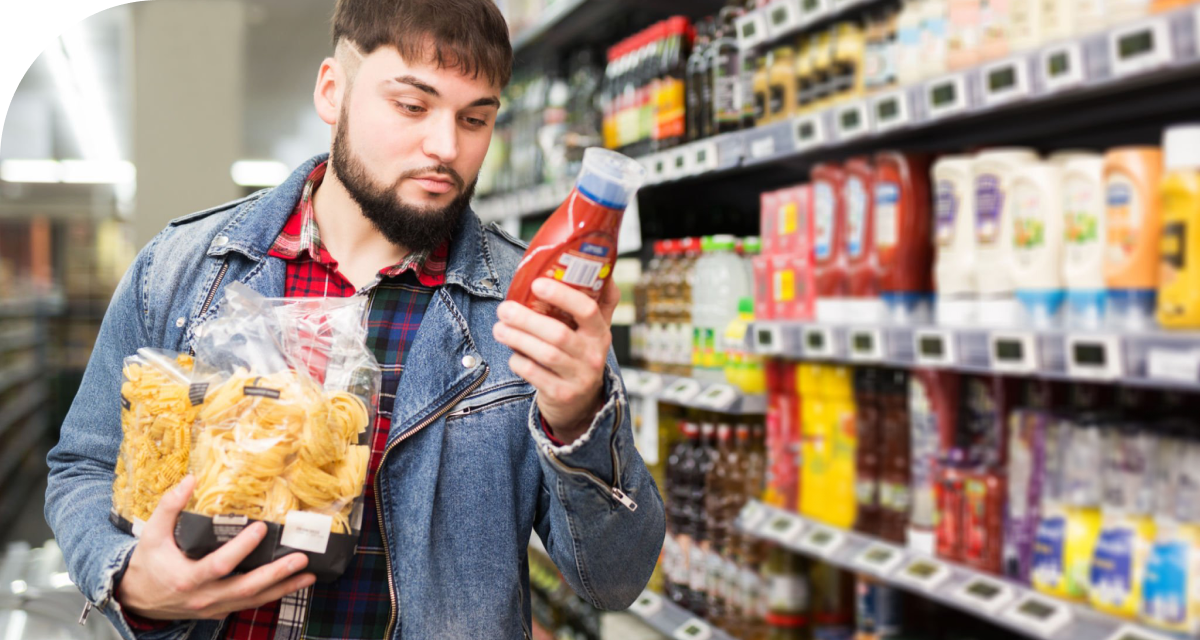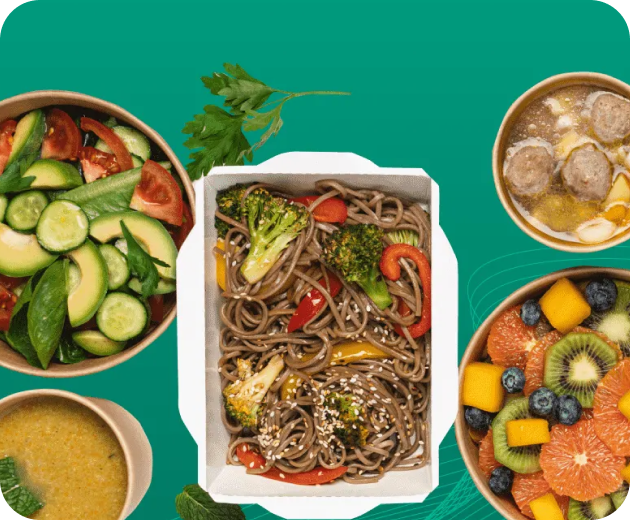FDA’s Crackdown on Ultra‑Processed Foods: What CPG Brands Must Do Now
In July 2025, the FDA made one of its most sweeping regulatory moves in years. As reported in DLA Piper’s Food & Beverage News and Trends, the agency is formally requesting industry input to define and regulate ultra-processed foods. With over 70% of U.S. calories now coming from these products, the pressure to reformulate, relabel, or risk removal is real. There’s still confusion around what ultra-processed really means, and our guide breaks it down.
This isn’t just about consumer opinion. It’s about staying shelf-stable in a market where retailers, regulators, and lawsuits are converging. Brands that wait will spend more, move slower, and lose space.
Why “ultra-processed” is the new red flag

The FDA’s upcoming regulations on ultra-processed foods are no longer a theoretical risk. In early 2025, the agency released a formal Request for Information (RFI) to define the term, signaling the beginning of new labeling rules that could affect everything from ingredient decks to shelf placement.
This comes amid growing pressure from both public health researchers and retail partners to regulate how processing levels are disclosed. And consumer sentiment is already ahead of the policy.
FDA’s request for information: what it means
The RFI focuses on how processing should be communicated on food labels. If finalized, these rules would reshape how brands use terms like “natural,” “minimally processed,” or “made with real ingredients.” For CPG innovation strategy teams, the implication is clear: start stress-testing label language now.
A consumer knowledge survey found that 55.3% of Americans associate ultra-processed foods with preservatives like BHA/BHT, far more than artificial sweeteners (34.8%) or hydrogenated oils (7.9%). These signals are shaping public understanding faster than legislation.
The survey also shows that snacking dominates ultra-processed food consumption. A full 67.18% say they eat them when snacking, compared to just 18.23% at lunch or 19.23% at dinner. This behavioral data should directly inform when and how reformulated products are positioned.
Consumer sentiment meets regulatory momentum
More importantly, consumers define “unhealthy” not by sugar or fat, but by processing. In a consumer opinion survey, 83.93% of respondents said they view a product as unhealthy primarily because it’s processed. Only 9.66% cited high sugar or sodium. That gap explains why health-forward SKUs still face rejection if their ingredient list feels “synthetic.”
The takeaway for clean label product development is simple: execution matters more than intention. Recent conversations around ingredient labeling changes have highlighted growing consumer awareness, especially in how they discuss ultra-processed foods. That perception is now guiding how regulators and retailers evaluate front-of-pack messaging.
Out with the old: 52 food standards on the chopping block
The FDA’s move to repeal or revise 52 legacy food standards, including those governing frozen cherry pie and French dressing, signals a broader regulatory reset. These standards, originally designed to protect consistency and safety, are now seen as outdated barriers to innovation.
What standards are being repealed and why
The repeal aims to remove redundancy, encourage innovation, and let consumers decide based on modern packaging transparency. But the real impact for manufacturers is timing. Brands reformulating under these new flexibilities still need to ensure they don’t cross into the ultra-processed foods classification, especially as consumer watchdog groups begin to fill the regulatory gaps.
If you want to keep your SKUs compliant, competitive, and on shelf in 2025, now’s the time to rethink how you execute.
For a deeper look at how these regulatory shifts tie into broader revenue strategy, download our ultra-processed foods eBook guide. It’s packed with forward-looking tactics for foodservice and retail teams building for this new reality.
Opportunities for product innovation and label refresh
This is a rare window to rethink label language. And not just for regulatory reasons. A brand awareness survey found that 94.15% of consumers are more likely to switch to a product labeled “Now made with whole ingredients.” That’s 7.6 times higher than those swayed by “100% natural” or “No artificial preservatives.”
Consumers are signaling exactly what they want from reformulated SKUs. And that data gives innovation teams a map, not just a warning.
What’s next for an ultra-processed staple?
Frozen pizza remains a go-to for convenience, with top consumer needs focused on “tasty” (23%), “convenient” (21%), and “easy” (15%). But growth is stagnant (+0% YoY), and many frozen SKUs still fall into the ultra-processed category—packed with additives and far from fresh.
To stay relevant, brands are exploring new angles: better ingredients, bold pairings, and formats that feel homemade. AI tools like Tastewise’s Recipe Creator help accelerate that shift. For example, this Mushroom Salami Pizza with Spicy Honey Drizzle draws on rising ingredients like spicy honey (+173% YoY) and balances indulgence with emerging taste preferences.
The opportunity? Frozen pizza that delivers on both convenience and modern consumer values. Not just faster, but smarter.
Risky labels and riskier lawsuits
Even before the FDA finalizes definitions, courts are already drawing the line. Several 2024 lawsuits challenged claims like “healthy,” “real,” and “clean” when applied to high-processed foods with long ingredient lists. These cases are setting the tone for 2025 and beyond.
The legal ramifications of mislabeling in 2025
Legal teams and regulatory affairs departments must now vet marketing language with more than just nutrition panels. Ingredient decks, additives, and even functional claims (like “wholesome” or “balanced”) are being scrutinized in class actions.
How AI can validate claims before they hit the shelf
Here’s where AI in food compliance becomes more than a nice-to-have. AI tools can scan product claims, match them against evolving food labeling regulations, and flag terms likely to raise red flags, before packaging goes to print. Systems like Tastewise use real-time FDA input, retailer standards, and consumer sentiment data to simulate risk exposure early in the pipeline.
This isn’t about playing it safe. It’s about avoiding reformulation twice, and protecting shelf space.
Supply chain and margin pressures: a regulatory domino
The cost of reformulating for compliance is real. Many brands are replacing low-cost emulsifiers, gums, or artificial sweeteners with natural alternatives, often at a 15–20% higher unit cost (IRI source).
Navigating inflation and compliance at once
With inflation still impacting raw ingredient pricing, innovation leads must now balance reformulation with profitability. This requires better prioritization, some SKUs carry more risk and reward than others.
Leveraging AI to prioritize profitable SKUs
AI in food compliance tools can rank products by margin, velocity, and regulatory risk, identifying which ones are worth cleaning up first. That helps teams focus on the SKUs that deliver the most compliance relief with the least disruption. Smart reformulation, not blanket strategy, is the only scalable solution.
How leading brands are using AI to navigate the shift
Brands that already have real-time AI support in place are reacting faster, and smarter. They’re not just minimizing exposure; they’re speeding up reformulation without overhauling entire portfolios.
Reformulation with ingredient intelligence
Ingredient-level AI enables teams to swap risky or flagged ingredients without sacrificing taste or shelf life. In one case study, a leading CPG replaced four high-risk inputs across two SKUs in under six weeks, versus the traditional three-to-four-month cycle.
That’s the kind of speed regulators aren’t going to wait for.
Packaging language aligned with consumer beliefs
Label claims also benefit from data-backed testing. The brand awareness survey showed that consumers rank “Now made with whole ingredients” far above “100% natural” or “Less processed, same great taste.” If your pack copy doesn’t match what consumers already trust, it’s unlikely to survive scrutiny, legal or otherwise.
FAQs
No formal definition has been adopted yet, but the FDA’s RFI suggests it will include both additive types and processing techniques. Expect official guidance in late 2025.
They compress the timeline for claim validation and reformulation. Every stage, from concept to packaging, now requires real-time regulatory input. AI in food compliance shortens that cycle without increasing risk.
Execution-first platforms like Tastewise allow brands to simulate FDA response, model consumer perception, and validate new ingredients or messages across entire portfolios. These tools are essential for clean label product development that holds up under scrutiny.




